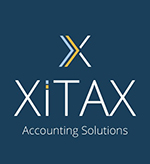In his November 2023 Autumn Statement, the Chancellor announced a reduction in the main primary rate of Class 1 National Insurance from 12% to 10%. Rather than waiting until the start of the 2024/25 tax year to bring in the change, it applies from 6 January 2024.
The change will benefit employers and directors, but will cause something of a headache for employers who will need to implement the change in-year.
Primary Class 1 contributions
Primary contributions are payable by employees and are the mechanism by which they build up entitlement to the state pension. For a year to be a qualifying year, an employee needs earnings at least equal to the lower earnings limit, which is set at £6,396 for 2023/24 (£123 per week).
Class 1 contributions are payable at the main Class 1 rate on earnings between the primary threshold and the upper earnings limit, and at the additional rate on earnings in excess of the upper earnings limit. For 2023/24, the primary threshold is aligned with the personal allowance at £12,570 and the upper earnings limit is set at £50,270, aligned with the point at which higher rate tax becomes payable. Employees with earnings between the lower earnings limit and the primary threshold are treated as having paid primary contributions at a zero rate. This secures a qualifying year for state pension purposes for zero National Insurance cost.
The main primary rate is 12% from 6 April 2023 to 5 January 2024 and 10% from 6 January 2024 to 5 April 2024. The additional primary rate is 2% throughout 2023/24. The reduction in the main primary rate will save an employee up to £62.82 per month.
Directors
Unlike other employees who have an earnings period that corresponds to their pay interval, directors have an annual earnings period regardless of the frequency with which they get paid. Directors’ contributions can be calculated as for PAYE on a cumulative basis by reference to the annual thresholds, or the alternative arrangements can be used under which the contributions are calculated as for other employees each time the director is paid, with the liability being recalculated on an annual basis when the director is paid for the final time in the tax year.
The liability should be calculated using the rates prevailing at the time. However, where the alternative arrangements are used, the in-year change will mean that a composite annual rate for 2023/24 must be used when calculating the annual liability at the year end. For 2023/24 the composite rate is 11.5%.
Giving effect to the changes
Employers will need to update their payroll software before making January 2024 (month 10) payments to employees.
If it is not possible to update the software in time, employers will need to rectify the position before the end of the 2023/24 tax year to ensure that employees and directors have paid the right contributions for the tax year.

